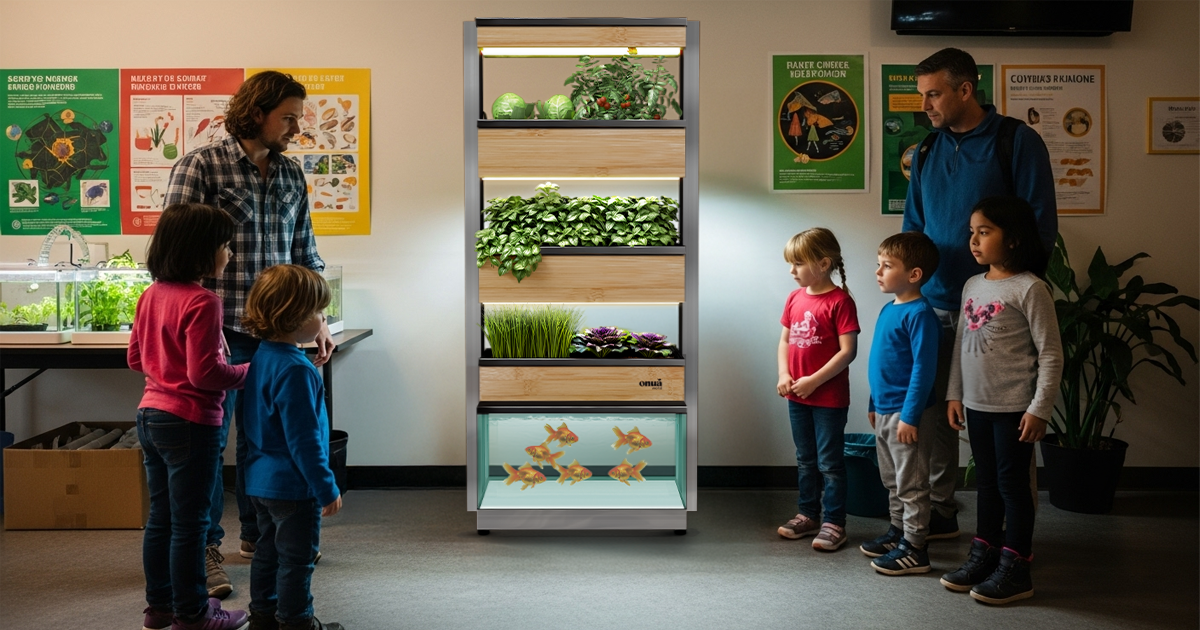Introduction
As climate change and environmental challenges dominate global conversations, citizens are increasingly asking for tangible proof that their cities are taking meaningful action. While regulatory frameworks and technological improvements (like energy efficiency or waste reduction) are crucial, they often remain invisible to the public eye. Yet, to truly mobilize communities, nothing works better than actions that are visible, accessible, and meaningful.
Many cities in Canada and abroad have understood this: engaging citizens in hands-on projects not only reduces environmental impact but also builds a sense of pride and collective ownership. Through initiatives such as green alleys, community gardens, green roofs, and aquaponic projects, municipalities are showing that they can be catalysts for change.
1. The Role of Cities in Driving Sustainable Engagement
Cities are at the forefront of the ecological transition. They concentrate the majority of the population, economic activities, and environmental impacts. By embracing this responsibility, they can become true living laboratories of sustainability.
Beyond action plans and policy documents, it is often concrete, citizen-facing projects that drive real engagement. People want to see and experience change in their everyday lives—walking down a greened alley, joining a composting workshop, or harvesting vegetables from a public garden. These practical experiences make sustainability both tangible and inspiring.
2. Visible Initiatives That Bring Communities Together
Around the world, cities are developing initiatives that embody this approach:
- Montreal has transformed hundreds of alleyways into green community spaces through partnerships with residents. These “green alleys” are not only biodiversity havens but also vibrant social spaces.
- Vancouver has led with its ambitious green roof program and urban agriculture policies. Community gardens and rooftop projects on public buildings produce food that is shared locally.
- Toronto has integrated greening projects into libraries and community centres, turning public spaces into hubs of education and environmental awareness.
- Internationally, Paris has launched the permis de végétaliser (license to green), empowering citizens to plant flowers, herbs, and vegetables on sidewalks, building façades, and at the base of trees.
These initiatives share a common thread: they are visible and participatory. They not only improve the environment but also empower citizens to take part in shaping their city, reinforcing social cohesion and collective buy-in for ecological goals.
3. Aquaponics as a Community Tool
Among innovative sustainable initiatives, aquaponics stands out as an approach that is at once ecological, educational, and community-driven.
What is Aquaponics?
Aquaponics is a closed-loop system that combines aquaculture (raising fish) with hydroponics (growing plants in water). Fish waste provides natural nutrients for plants, while plants purify the water, which is then recirculated back to the fish. It is, in essence, a small-scale ecosystem that mirrors the natural world.
Why in Cities?
Installing an aquaponic garden in a library, community centre, or city hall turns sustainability into a visible, interactive experience. Such projects contribute to multiple goals:
- Education: A living teaching tool for schools and families, helping them learn about natural cycles, food systems, and self-sufficiency.
- Visibility: Unlike energy retrofits or waste management, an aquaponic garden is something people can see, touch, and experience—a showcase of ecological commitment.
- Solidarity: Harvests can be donated to Meals on Wheels programs or distributed to families in need, strengthening the social fabric.
- Inspiration: Seeing fresh produce grow in the heart of a public space sparks curiosity and encourages citizens to adopt sustainable practices at home.
- Green Certifications: These initiatives contribute to frameworks like LEED, BOMA, or WELL by supporting education, biodiversity, and reduced environmental impact.
4. The Ripple Effect: Inspiring by Example
When a city implements a visible and community-oriented project, it creates a ripple effect. Citizens are more likely to adopt sustainable habits when they see them embodied in their surroundings. Moreover, such initiatives often inspire other municipalities to follow suit, creating a network of shared best practices.
Whether it’s a green alley, a rooftop garden, or an aquaponic installation, these are more than ecological projects—they are symbols of leadership. They signal a city’s willingness to act and inspire, turning sustainability from an abstract concept into a lived, shared reality.
Conclusion
The ecological transition is not only driven by international summits or government policies. It is also lived every day in our cities and neighborhoods.
By multiplying visible initiatives—green alleys, rooftop gardens, licenses to green, aquaponic gardens—municipalities demonstrate that they can mobilize citizens and build more resilient communities. These projects, both educational and socially meaningful, nourish the planet while strengthening social ties.




